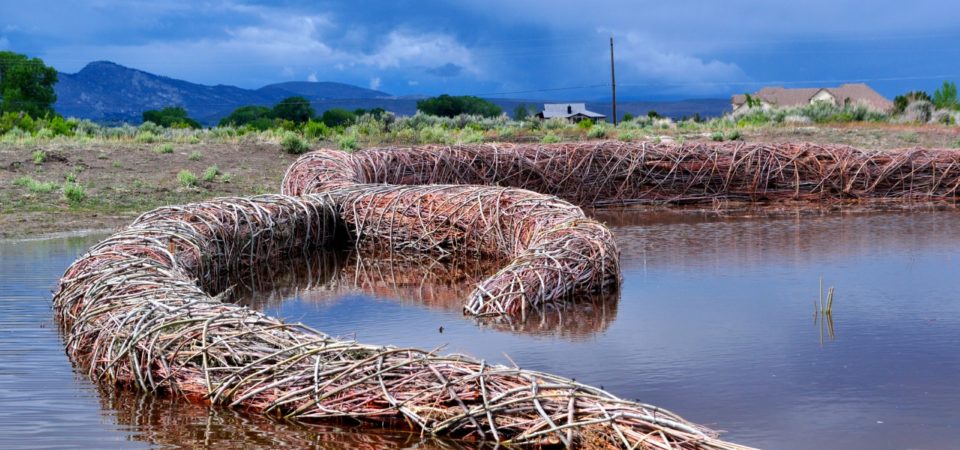Adobe Creek runs through the heart of California’s Silicon Valley Redwood Grove Park. Since 2013, a deep green thicket of sprouting willows secures one of the creek banks. One might not easily recognize this as art, but this bank of native willow bushes has its origin through the hands of hundreds of local volunteers—neighbors, Boy Scouts, school children, even tourists— under the direction of two California artists Daniel McCormick and Mary O’Brien and their studio, Watershed Sculpture. Tasked with replacing vegetation on a deeply eroded creek bank that once nurtured the highly invasive, exotic giant cane (Arundo donax) the artist team worked with the Santa Clara Valley Water District and site stewards Grassroots Ecology to design a remedial sculpture that would contain the erosive soil when the invasive plants were removed.
McCormick and O’Brien create art installations with a biological trajectory and remedial outcomes. Their ecological sculptures work to influence the balance of compromised environments by allowing the damaged areas of watersheds to reestablish themselves. They have created large-scale installations in National Parks, conservation districts, and open-space lands throughout the U.S.
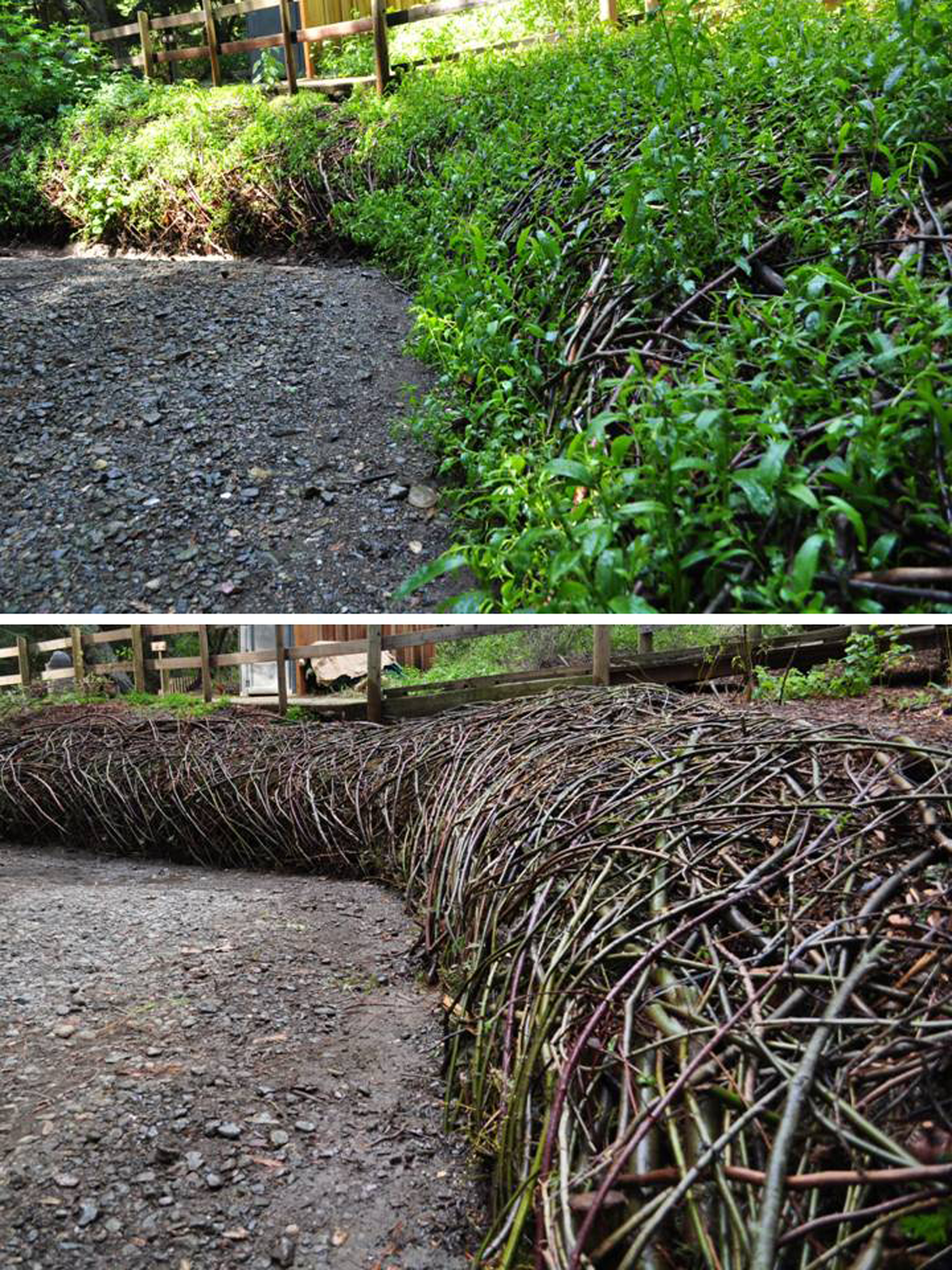
“Knowing humans have made a difference in this ecological era—rivers and neighborhood creeks degraded to the point that there’s no fish in them—was a thing that sparked a change for me. I was working in urban design. We saw a lot of building on watersheds. There were building developments near rivers, and when those rivers come up and there’s not enough pervious soil to take up the water, you get flooding,” says McCormick. “As a civilization, we have inherited a great deal of environmental loss. Growing up, whether we know it or not, we all witnessed the degradation of our environment. And each generation inherits what we don’t preserve, or what we damage. Human effects on earth are as strong as other forces in earlier geologic eras, and that will continue until something happens; positive or negative,” adds O’Brien.
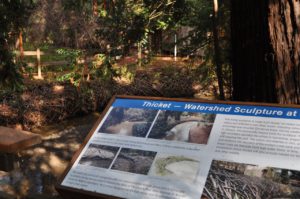
Visitors to the Adobe Creek do not always notice the sculpture that serves as the thicket’s backbone, or know about the volunteer effort that went into planning and creating the evolving artwork. But the influence remains in the successful restoration of the creek bank. And that is exactly how the artists intend it.
Today, this small section of the creek is reminiscent of the early 1900s, before hastily planted redwood trees out-competed the native willow for the shallow water table. The artists’ work at Adobe Creek and other similar sculptural installations serve as restoration acts, mirroring other ongoing conservation projects throughout this small pocket park in Los Altos, CA. It’s here that the meandering Adobe Creek can be enjoyed in a natural setting before it becomes channelized as it flows through neighborhoods and on its way to San Francisco Bay.
The work of O’Brien and McCormick consists of place-specific installations that focus on current and local conservation issues. Working in the arena of social engagement, they research site, community, and environmental characteristics and respond with interdisciplinary collaborations. The results empower citizens in their communities. Moving away from an anthropocentric view of nature, the artists intend their works to lend aesthetic weight to the restoration and encourage sustainability and stewardship of that environment. It brings attention to restoration efforts in ways science often cannot.
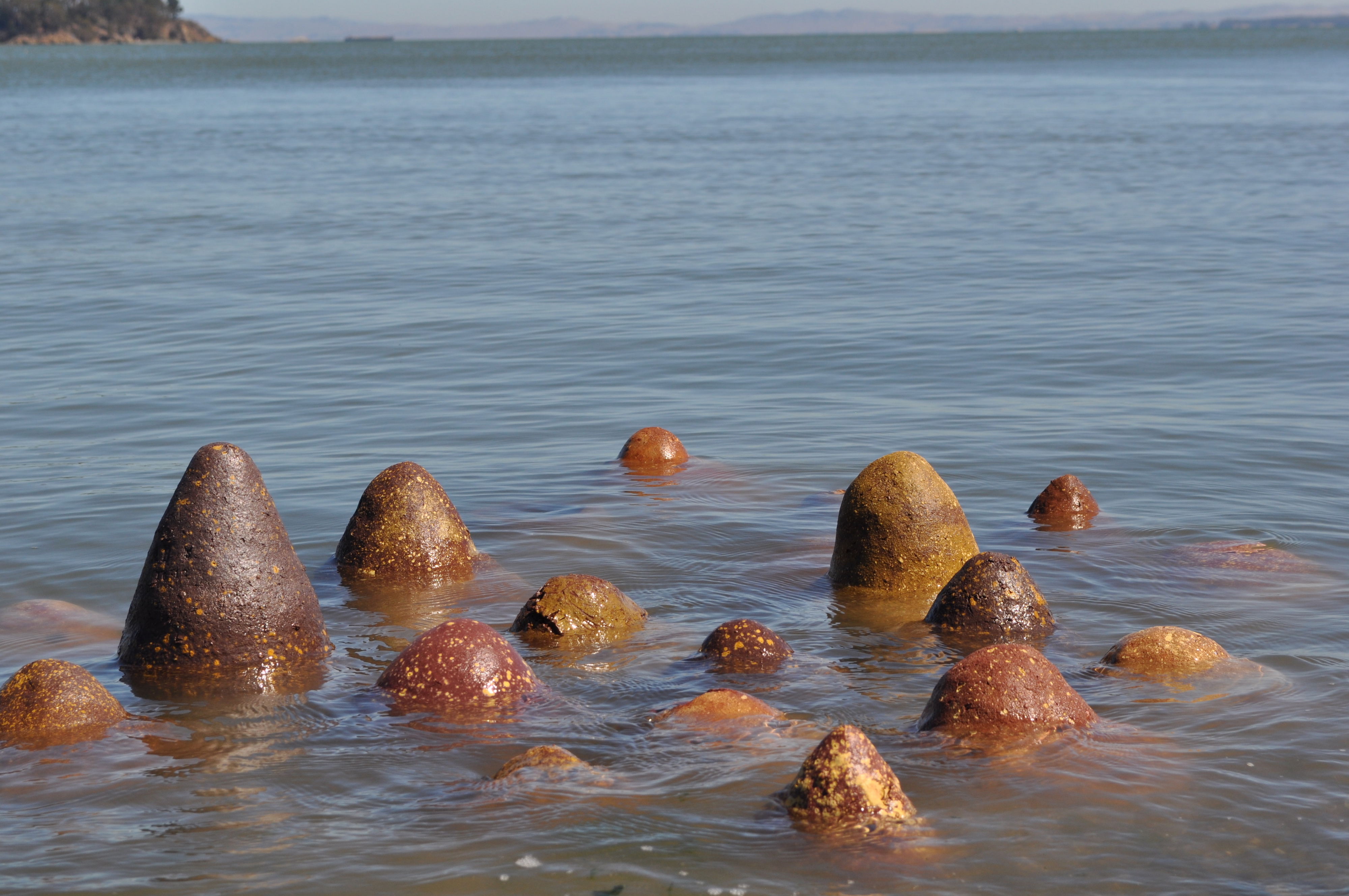
The artists look at the connectedness of a site—studying its land forms, water courses, and human pathways. They adopt an ecological perspective for their designs that include scientific and land stewardship principles. They design ecological installations that can influence the balance of compromised natural environments, using sculpture in a way that will allow the damaged areas of a watershed to reestablish themselves. In addition to stream bank restoration, the artists’ installations have taken the form of oyster beds in Oakland, storm surge barriers along Louisiana’s Gulf Coast, and most recently riparian habitat along the Truckee and Carson Rivers of Nevada.
The artists strategically congregate sculptural components made from riparian materials back into the watershed. The sculptures are intended to give advantage to natural systems, and after a period of time, as the restoration process is established, the artists’ presence becomes less and less apparent. As McCormick describes it: “where our practice separates itself from other environmental art is that we employ a biological trajectory and that’s a response to the world we grew up in.” O’Brien adds, “We take what the science has discovered, recommends, believes is the right approach and as artists, interpret it as a remedial installation on the land.”
The ongoing nature of McCormick’s and O’Brien’s projects offer an inquiry into present day relationships between community, land, and water, and investigation into ways in which they influence each other. Reflecting their belief that ecological art has a responsibility to do more than just witness or document place, the sculptural installations of McCormick and O’Brien move beyond the created works, to become a catalyst to affect a positive ecological balance in damaged environments. Their work is founded on the principle that artists, in collaboration with other disciplines can create remarkable works that encourage sustainability and citizen stewardship of the places they love.
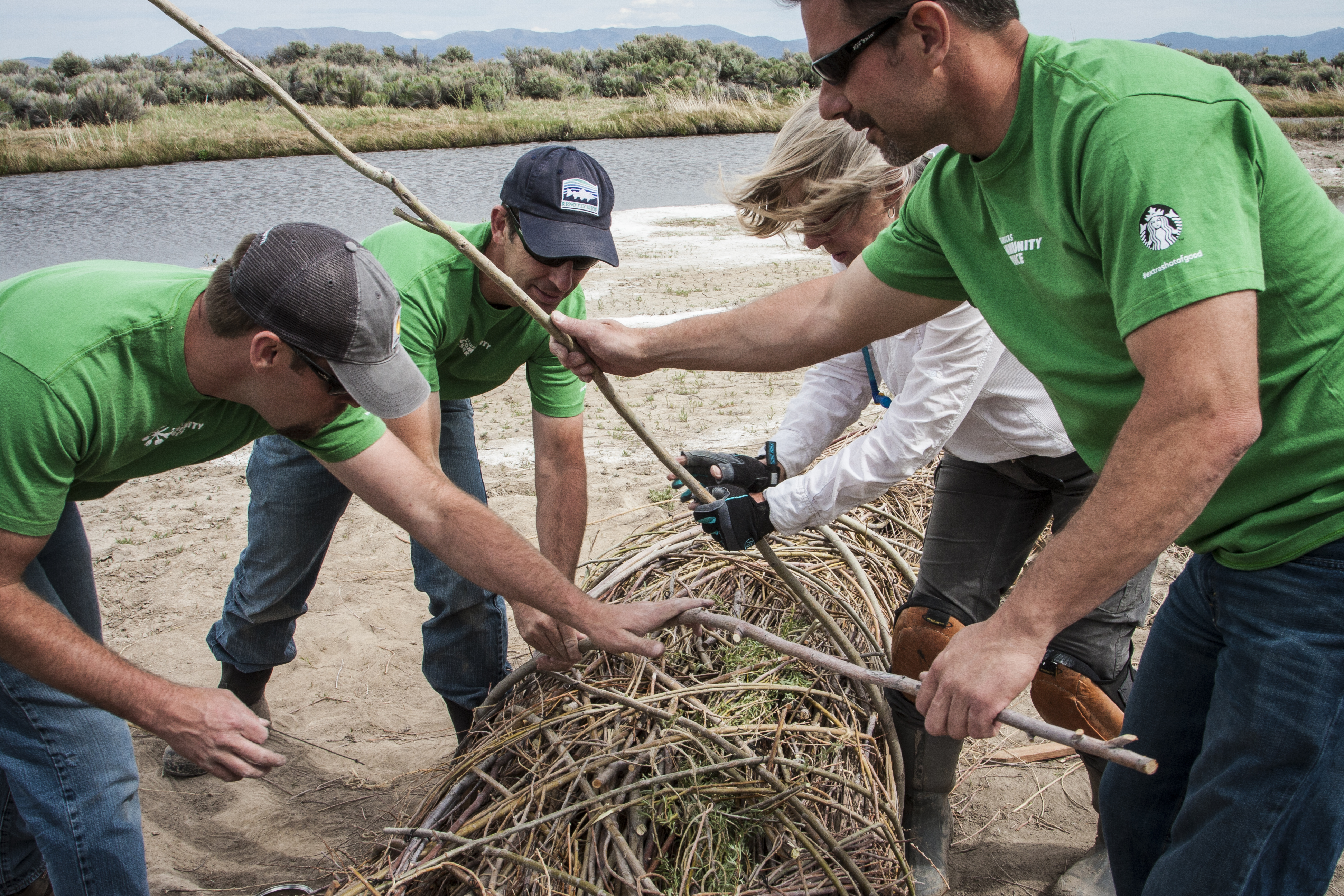
“Volunteers play an important role in our works. As a result of helping us build them, they acquire a pride of ownership. And eventually,” says O’Brien, “they become stewards, monitoring the work as it evolves. I’m an urban dweller and a lot of the volunteers we work with are as well. What happens at these sites, affects every one of us. It’s not just entertainment and recreation. There is life here, there are wild species here, and if that disappears, it will have a profound effect on all of us.”
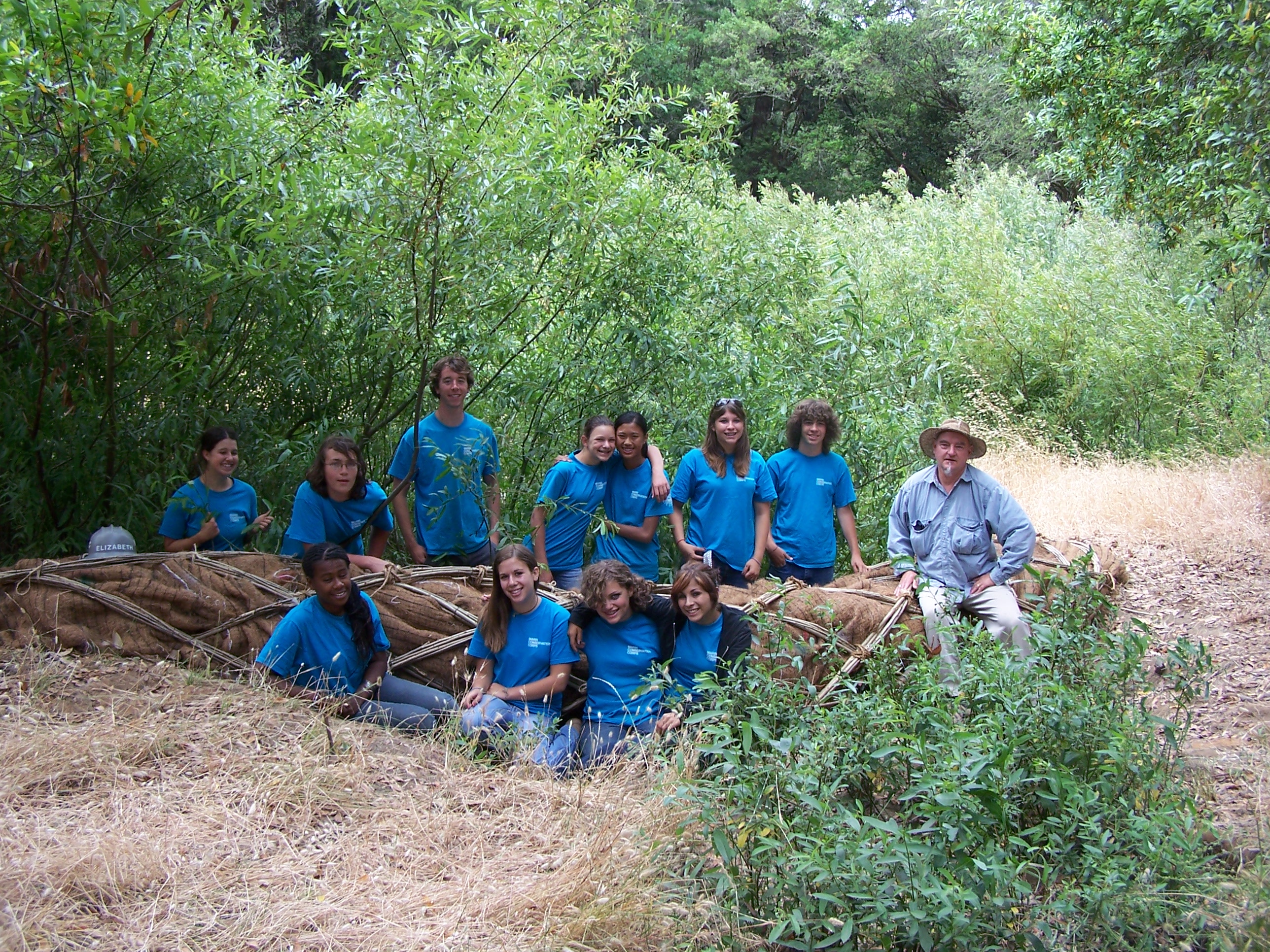
William Fox the Director of the Center for Art and the Environment at Reno’s Nevada Museum of Art describes the team’s work this way:
“Their works often become community projects involving land managers, water quality agencies, schools, and local nonprofits. In addition to creating sculptures, they are often engaged as consultants in community master planning. There’s a handful of people on the planet doing this kind of work…to deal with how we’ve disrupted nature—‘art that walks in the world.’ The sculptures, as they grow into silt traps, erosion control implements, fish habitat, and other ecological enhancements, eventually disappear, becoming part of the land and waters they serve to improve.”
McCormick’s view is somewhat more conceptual: “Our art is not a permanent thing as in an art object, it’s a permanent thing in an idea and an ecology. It will lose its identity as a handmade object and it will be reclaimed by this environment that we’re in right now.”
The artists’ installations throughout the U.S. have responded in positive ways. Barred owls and a native sedge returned to a site in Charlotte, NC. In the SF Bay Area erosion control projects along several creeks have grown and maintained their intended function for over a decade, during several droughts and high water cycles. An island they restored with bald cypress seedlings in Louisiana’s Mississippi delta is emerging and gaining land each year. In Nevada, their river sculptures have experienced several seasonal floods and continue to enhance habitats. The team keeps track of their works with the help of the engaged citizens that helped build them. Social media and the partnerships and friendships they’ve made helps them keep an eye on the works. “We try and monitor all of our work annually and to do a major assessment at the 5 year and 10 year marks”, says O’Brien. They’re focused next on a soil rebuilding project for a post-industrial urban environment dominated by concrete and invasive plants.
About the Artists
In the early 1990s the California artist Daniel McCormick began to go beyond witnessing and documenting environmental damage to create artworks as ecological interventions, adding aesthetics to restoration. Joined by artist and filmmaker Mary O’Brien, they founded Watershed Sculpture as a studio to address sites in need of environmental remediation.
Daniel McCormick is an interdisciplinary artist with integrated skills in sculptural installation, environmental design and ecological restoration. He earned a degree in environmental design from UC Berkeley, and has studied with James Turrell. He is the recipient of numerous awards and his work has been featured in exhibitions at the Nevada Museum of Art Oakland Museum of California, Sonoma Valley Museum of Art, Bolinas Art Museum, Headlands Center for the Arts, Pasadena’s Armory Center for the Arts and California Museum, and the McColl Center for Visual Art.
Mary O’Brien is an award winning sculptor and filmmaker. She received a BA in Political Science from Marquette University, studied environmental communications at the University of Minnesota, and earned a Post-Baccalaureate Certificate in Studio Arts from UC Berkeley. Her work has been shown at the Nevada Museum of Art, The John Steinbeck Museum, Natsoulas Center for the Arts and the San Francisco Museum of Craft & Design.
You can learn more about McCormich and O’Brien’s work along the lower Truckee River of Nevada in Nature Unleashed.
This post is part of the MAHB’s Arts Community space –an open space for MAHB members to share, discuss, and connect with artwork processes and products pushing for change. Please visit the MAHB Arts Community to share and reflect on how art can promote critical changes in behavior and systems and contact Erika with any questions or suggestions you have regarding the space.
MAHB Blog: https://mahb.stanford.edu/creative-expressions/lending-aesthetic-weight/
The views and opinions expressed through the MAHB Website are those of the contributing authors and do not necessarily reflect an official position of the MAHB. The MAHB aims to share a range of perspectives and welcomes the discussions that they prompt.
